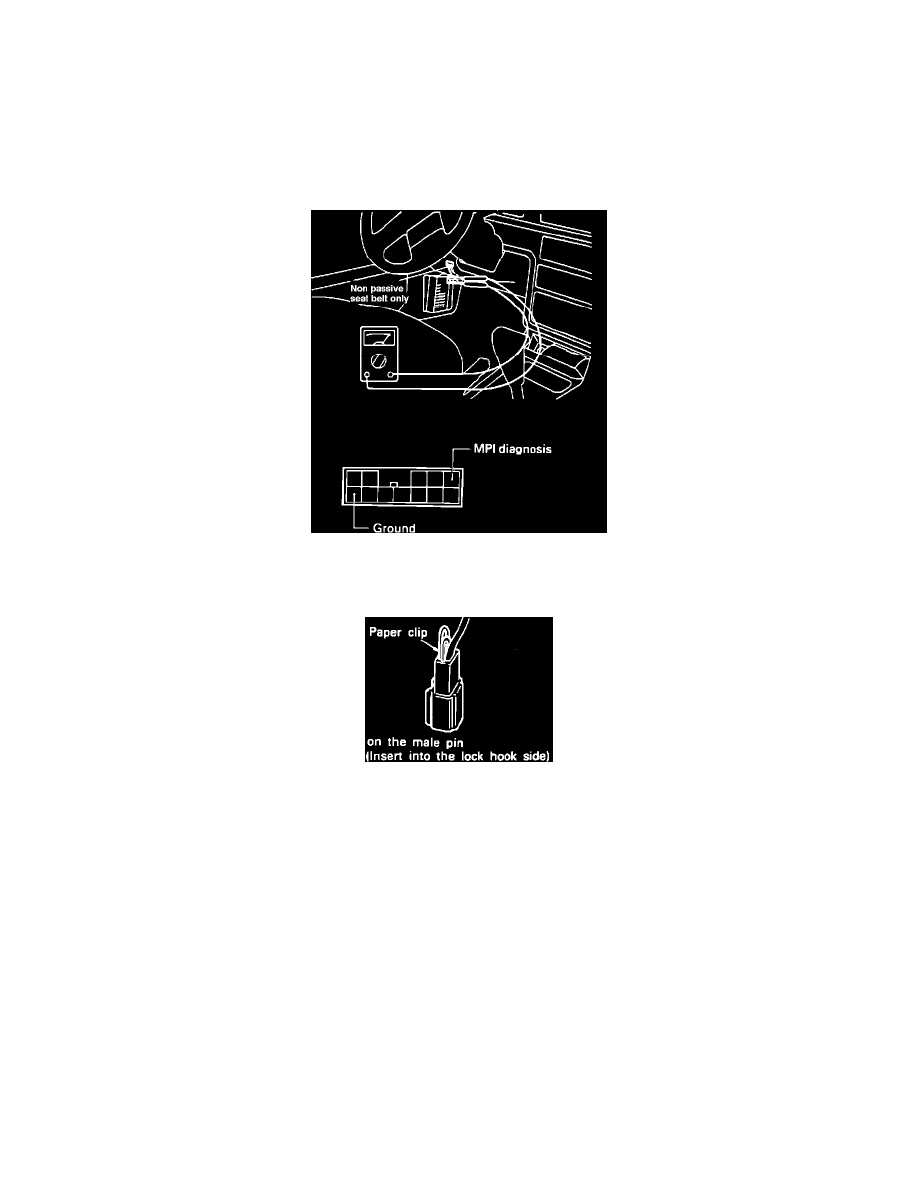Sonata V6-3.0L (1991)

Idle Speed: Adjustments
IDLE SPEED CHECK PROCEDURE
This procedure is to check idle speed only. To set idle speed, refer to IDLE SPEED ADJUSTMENT PROCEDURES listed below.
CHECKING CONDITIONS:
Engine coolant temperature is 80 to 95~C (176 - 203~F).
Engine lubricant temperature is over 80~C (176~F).
Lights, electric cooling fan and all accessories are off.
Transmission is in neutral ("P" or "N" range for A/T vehicles).
Steering wheel is straight forward position (vehicles with power steering).
Location Of Diagnostic Connector
1.
Install a tachometer and a timing light, or connect the Hyundai multi-use tester to the diagnosis connector.
Tachometer Hook-up
2.
If the hyundai multi-use tester is not used, Install a tachometer.
NOTE: Insert a paper clip from the harness side, into the connector between the ignition coil and the noise filter. Connect the tachometer to the
paper clip.
3.
Run the engine at curb idle speed.
4.
Check the basic ignition timing and adjust if necessary (see IGNITION TIMING).
BASE IGNITION TIMING: BTDC 5~ +/- 2°
(At curb idle)
5.
Run the engine for more than 5 seconds at an engine speed of 2,000 to 3,000 rpm.
6.
Run the engine at idle for 2 minutes.
7.
Read the idling rpm. If the multi-use tester is used, press code No.22 and read the idling rpm. If it is not within the specified value, check the idle
speed control system, refer to Computers and Control Systems.
CURB IDLE RPM: 700 ± 100 rpm
IDLE SPEED ADJUSTMENT PROCEDURES
ADJUSTMENT CONDITIONS:
